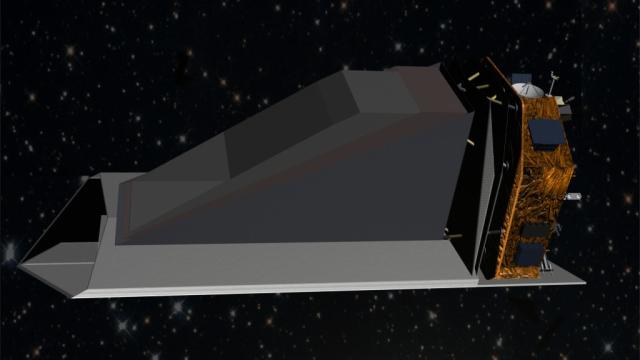NASA will begin developing a space-based telescope to track the asteroids near Earth, according to a statement by NASA’s associate administrator for science, Thomas Zurbuchen.
Space News reports that the mission will be based on a previous concept mission called NEOCam. The Near-Earth Object Surveillance Mission will be led by NASA, unlike NEOCam, which would have been part of the agency’s proposal-based, principle investigator-led Discovery Program. The mission will help NASA fulfil its congressional mandate to discover asteroids that potentially threaten Earth.
The small telescope would observe infrared wavelengths of light, cost around $740 million, and launch during or after 2025, according to the Space News report. Zurbuchen said it would take 10 years for the telescope to reach its goal, according to Space News.
U.S. Congress’s 2005 mandate ordered NASA to find 90 per cent of near-Earth asteroids larger than 140 metres in diameter by 2020. But inadequate infrastructure has prevented scientists from achieving that goal. Scientists estimate that there are 25,000 near-Earth objects larger than 140 metres across, but telescopes around the world have only found a third of them.
There’s already a re-purposed infrared space telescope called NEOWISE cataloguing near-Earth asteroids, and this year, the U.S. National Academies released a report encouraging NASA and astronomers to construct a successor, NEOCam. NASA provided early funding for the mission, specifically to research the infrared detectors that would be required for asteroid hunting, according to Space News. Though NASA is not moving forward with NEOCam, the research work will be included in the new Near-Earth Object Surveillance Mission.
“I am very pleased to hear that NASA is interested in supporting an asteroid survey mission. It is what we proposed as NEOCam: a 50-centimetre telescope operating at infrared wavelengths sensitive to the heat the asteroids and comets emit,” NEOCam’s principal investigator, Amy Mainzer, told Gizmodo. “The mission directly addresses the recommendations of the National Academy that were recently published.”
Mainzer, a professor of planetary sciences at the University of Arizona, said she’s now working out the details of how she’ll be involved with the mission.
It’s exciting stuff. “One of the most important things NASA can do, in my opinion, is use science and technology to help protect the Earth and all of its inhabitants from bad things like climate change, loss of biodiversity, and in this case, asteroid and comet impacts,” Mainzer said. “This applied science is important to everyone, and NASA has great capability here.”
